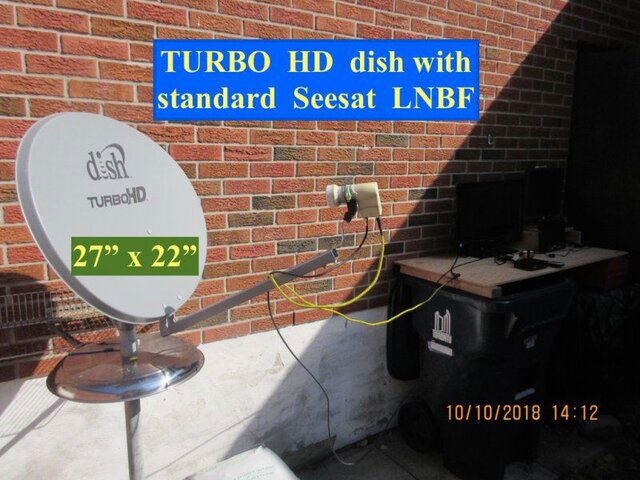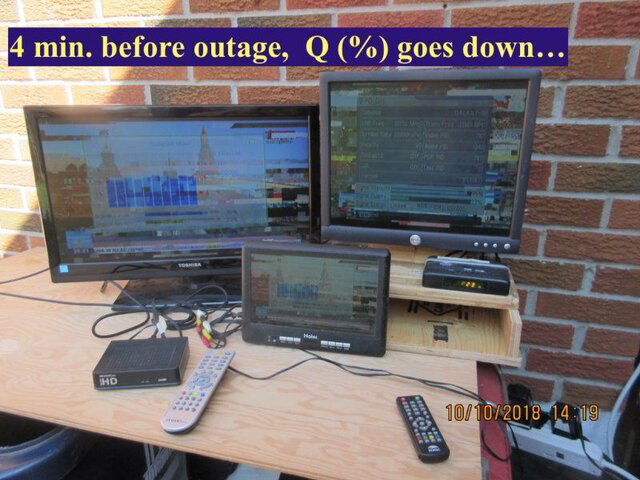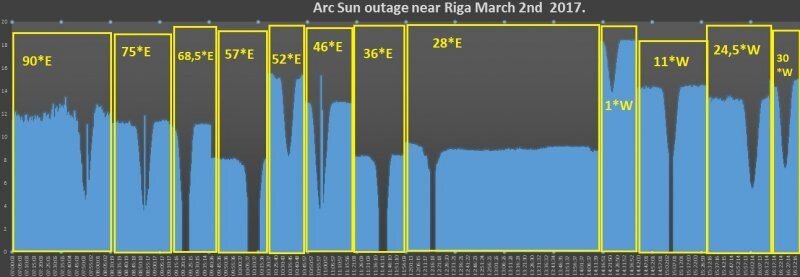Some time ago I wondered what happened to Sun outage, since I did not notice major interruption in watching programs, except reduced "Q" (quality) percentage, which lasted a few minutes( I was using 39" dishes)
Today I tried to document the Sun outage, by setting up smaller dish and using 3 screens.
10 annotated photos follow ;










Today I tried to document the Sun outage, by setting up smaller dish and using 3 screens.
10 annotated photos follow ;













